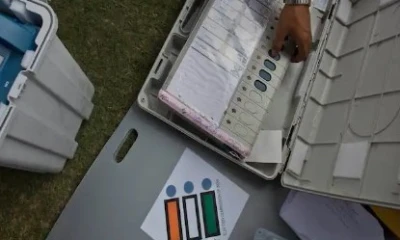In its verdict, the Supreme Court rejected petitions that demanded 100 per cent cross-verification of votes cast on Electronic Voting Machines-EVMs with Voter Verifiable Paper Audit Trails-VVPATs. The move by the Apec Court confirmed the credibility of EVMs and their integration with VVPATs.
A Bench comprising justices Sanjiv Khanna and Dipankar Datta delivered a joint judgment, asserting confidence in the existing electoral framework. They emphasised that unfounded suspicions are insufficient grounds to challenge a system fundamental to the world’s largest democracy.
To address concerns and bolster transparency, the court issued directives aimed at enhancing the integrity of the electoral process. Firstly, it mandated the sealing of symbol loading unit containers in the presence of candidates or their agents, to be securely stored for 45 days following the elections. This period allows candidates to file petitions contesting the results.
Secondly, the court ordered post-election examination of EVM components and VVPATs by engineers from EVM manufacturing companies upon written complaints filed by candidates within seven days of poll results.
The court’s ruling followed its previous assertion that the Election Commission of India (ECI) holds the authority over election management. It highlighted that the judiciary cannot intervene in EVM-related matters solely based on suspicions or private reports, asserting the confidentiality of EVM source codes to prevent misuse.
The petitions before the court sparked significant political and public interest in ensuring the integrity of electronic voting, particularly through VVPATs. This system provides voters with paper slip confirmation, enhancing transparency and facilitating dispute resolution. Presently, VVPAT verification involves sampling from five randomly selected EVMs in each assembly segment.

















